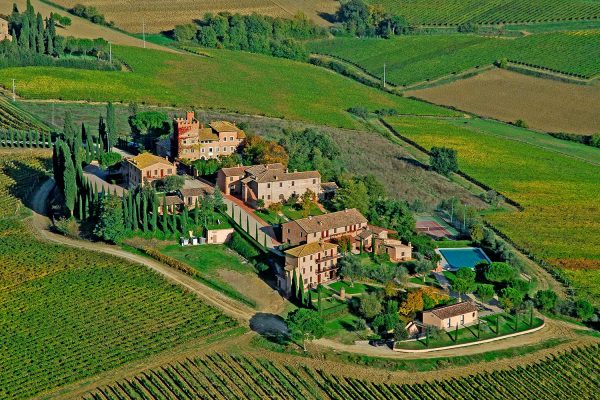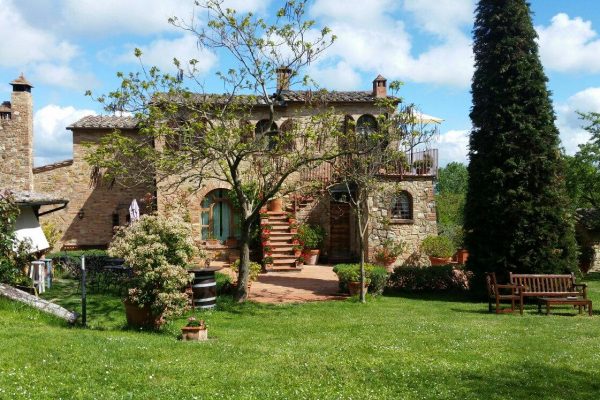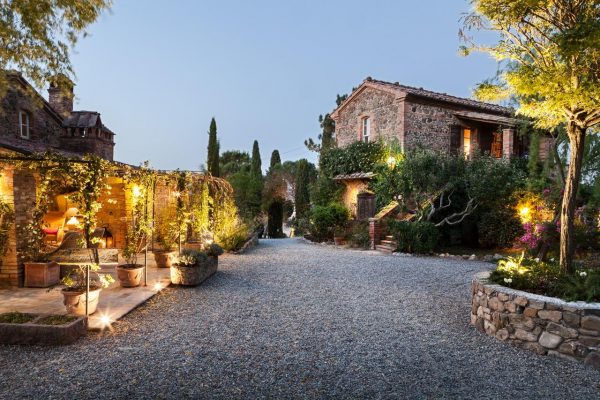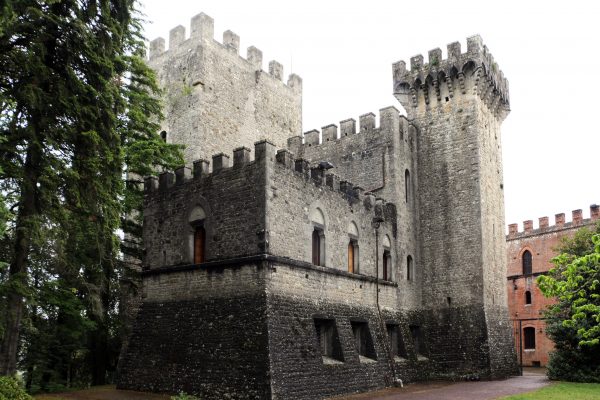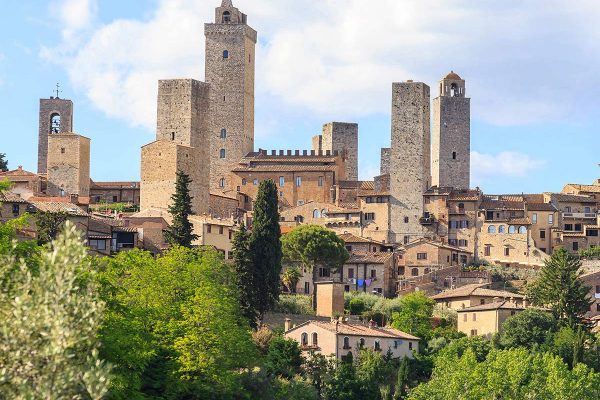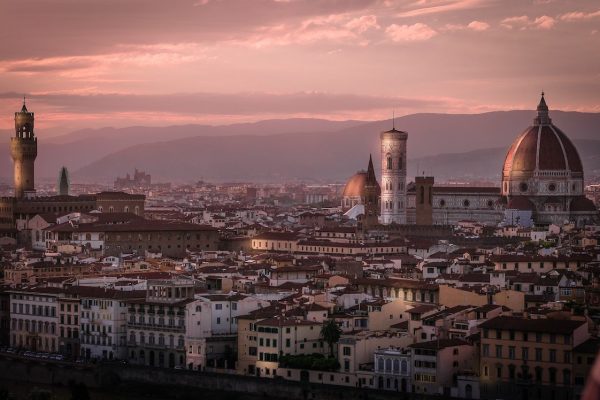One day in Val d’Orcia: the hamlets not to be missed
A lifetime would not be enough to discover all the beauties that Val d’Orcia holds, but one day can be enough to let yourself be delighted by its atmosphere to the point of wanting to return again and again.
We have thought of a one-day itinerary for you to discover this enchanting valley, starting from Montepulciano up to Montalcino, passing through Pienza and San Quirico d’Orcia. A journey through history, art, good food, and excellent wines that are just waiting to be experienced.
Montepulciano
To begin the discovery of Val d’Orcia we recommend starting from Montepulciano, a small medieval hamlet a few kilometers from Siena that offers a splendid view of all the surrounding hills. Here you will find Renaissance palaces, ancient churches, and beautiful squares in which to spend the morning.
The best way to discover the city and its hidden treasures? Walking through its streets! All the main monuments are enclosed within the walls of the old city. Arrived at the walls, walk along the elegant street to the main square, Piazza Grande, the highest point of the city dominated by the Palazzo Comunale with the facade by Michelozzo (dating back to the 1300s), and by the Duomo, completed in 1630 on a design by Ippolito Scalza.
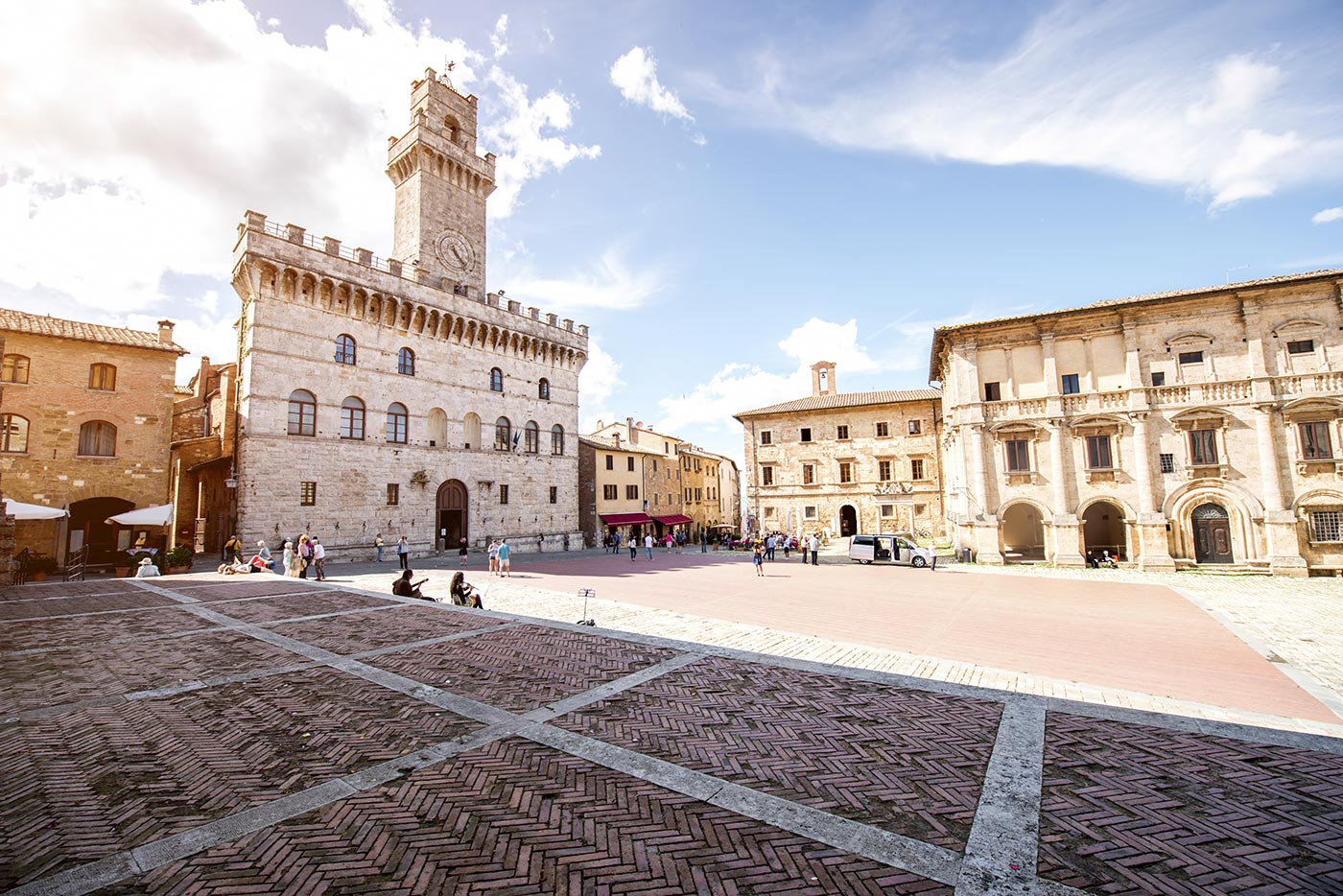
Also in the square, you can admire Palazzo Contucci and Palazzo Tarugi, ancient residences of the nobles of the area, and the Torture Museum, where you will find a private collection of instruments of torture dating back to the medieval and Renaissance periods.
If drinking a good glass of wine in the late morning is not a problem for you, you cannot fail to stop and taste the Nobile, famous DOCG wine produced only in Montepulciano. To do this, you won’t have to go far: walking through the alleys of the center you will find numerous historic wineries that offer tastings of the Noble accompanied by typical products of the highest quality. Among the most famous wineries are the Cantina Ercolani and Talosa, where real experiences await you to discover the flavors of the city.
At the foot of the hamlet, surrounded by greenery, you will then find Chiesa di San Biagio, a destination not particularly known by tourists but certainly worth a little stop before moving on to the next stage of our itinerary.
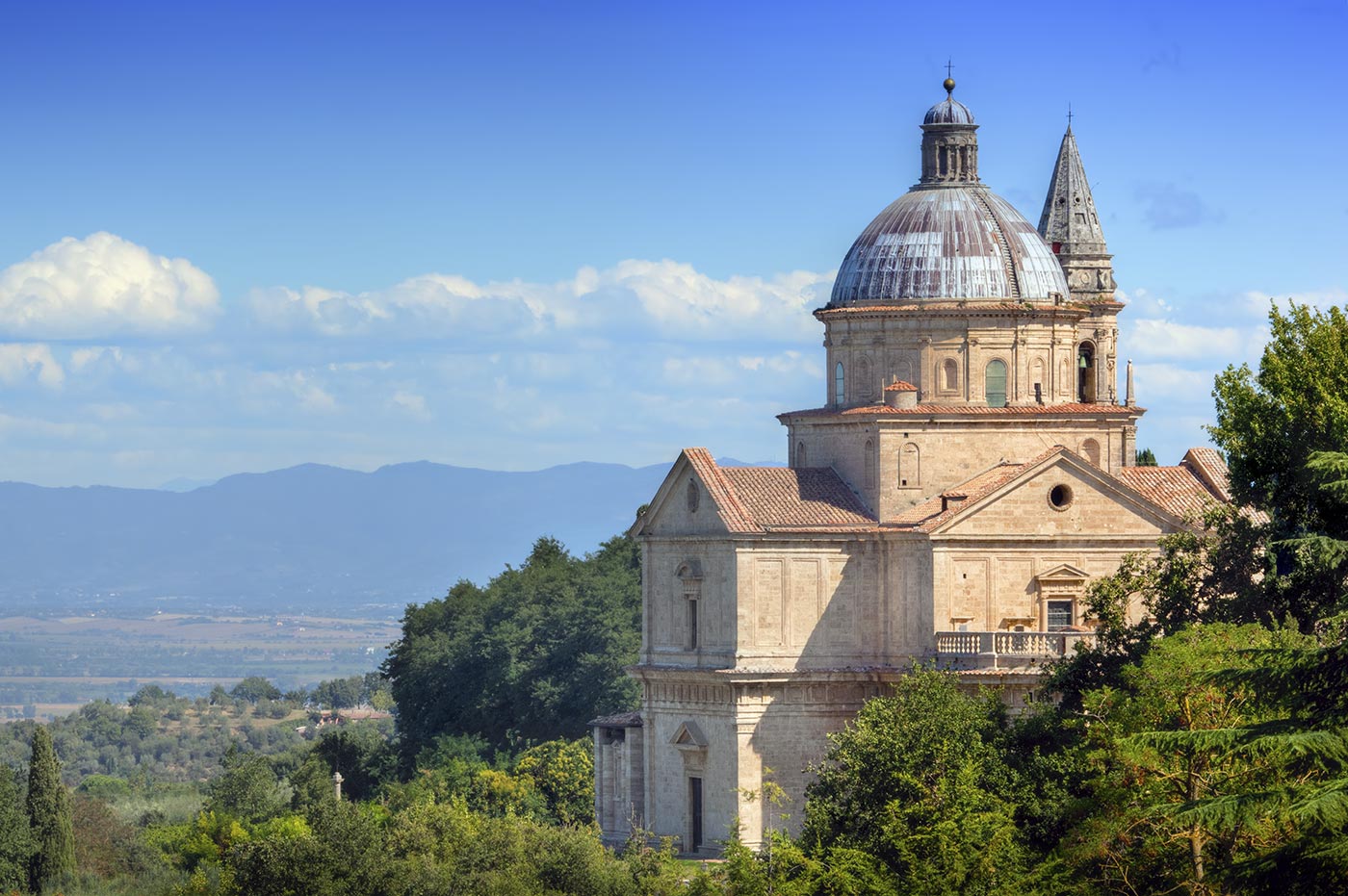
Fun fact
Cosimo I de Medici wanted the construction of the Palazzo Comunale of Montepulciano, designed in a very similar way to the Palazzo Vecchio in Florence, to indicate the dependence on the Florentine city.
Pienza
The second stop on our itinerary is Pienza, a UNESCO heritage site and a small Renaissance jewel that concentrates history, art, and culture.
Like any self-respecting ancient hamlet, Pienza also contains all the main places of interest in the historic center, around Piazza Pio II, making it easier for us to go and discover its monuments.
Here we find the Duomo, in whose architecture the Gothic and Renaissance styles are perfectly mixed, and inside which you can see the works of art of some of the greatest artists of the Sienese school.
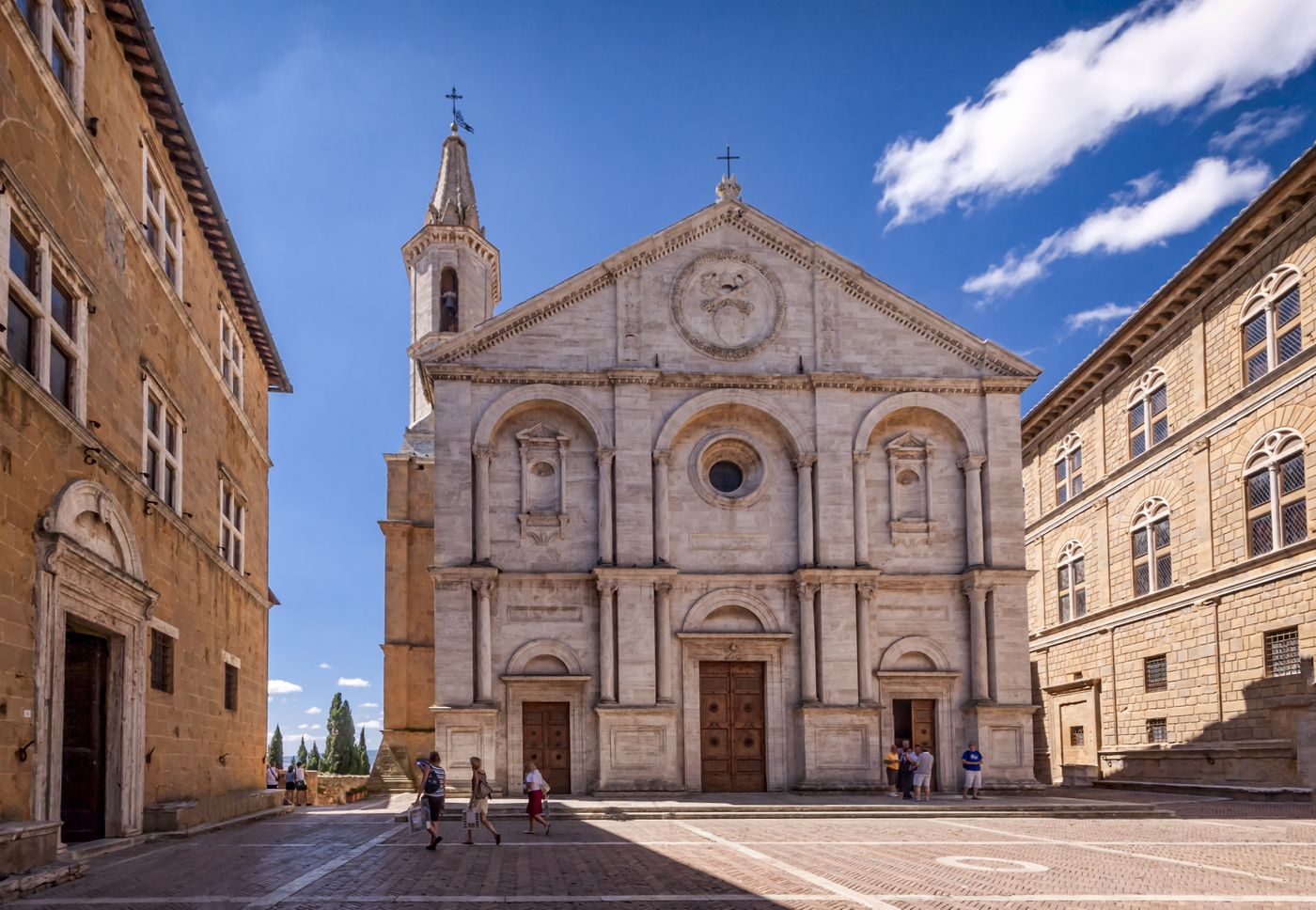
To the right of the Duomo stands Palazzo Piccolomini: once it was the summer residence of Pope Pio II, but today is the ideal place to dive into the past, thanks to the permanent exhibition that explains the origin of the building, the secret rooms still furnished with the furniture of the time and the hanging garden that you can admire in the courtyard of the palace, the first hanging garden of the Renaissance.
A few steps from here, you will find the Palazzo Comunale and Palazzo Borgia which house precious works of art dating back to the Middle Ages, including a fresco depicting the Madonna and Child and the saint patrons of Pienza: San Vito, San Modesto, and San Matteo, who you can admire in the Council Hall of the Municipality.
After visiting the main monuments of the city, stop for lunch in one of the restaurants nearby. We recommend Sette di Vino, a small osteria a few steps from the main square where you can taste the traditional Tuscan food, first of all the Pecorino di Pienza DOP, which you will find in many delicious and original variations that best enhance the quality.
Visualizza questo post su Instagram
After lunch, a tour of the walls to enjoy the breathtaking view and then off to San Quirico d’Orcia, stopping along the way to admire Cappella della Madonna di Vitaleta, a small church protected by cypresses in the middle of the Vitaleta hills. A UNESCO World Heritage Site, this small chapel has also linked a legend: it seems that it was built in the exact spot where Mary appeared to a shepherdess.
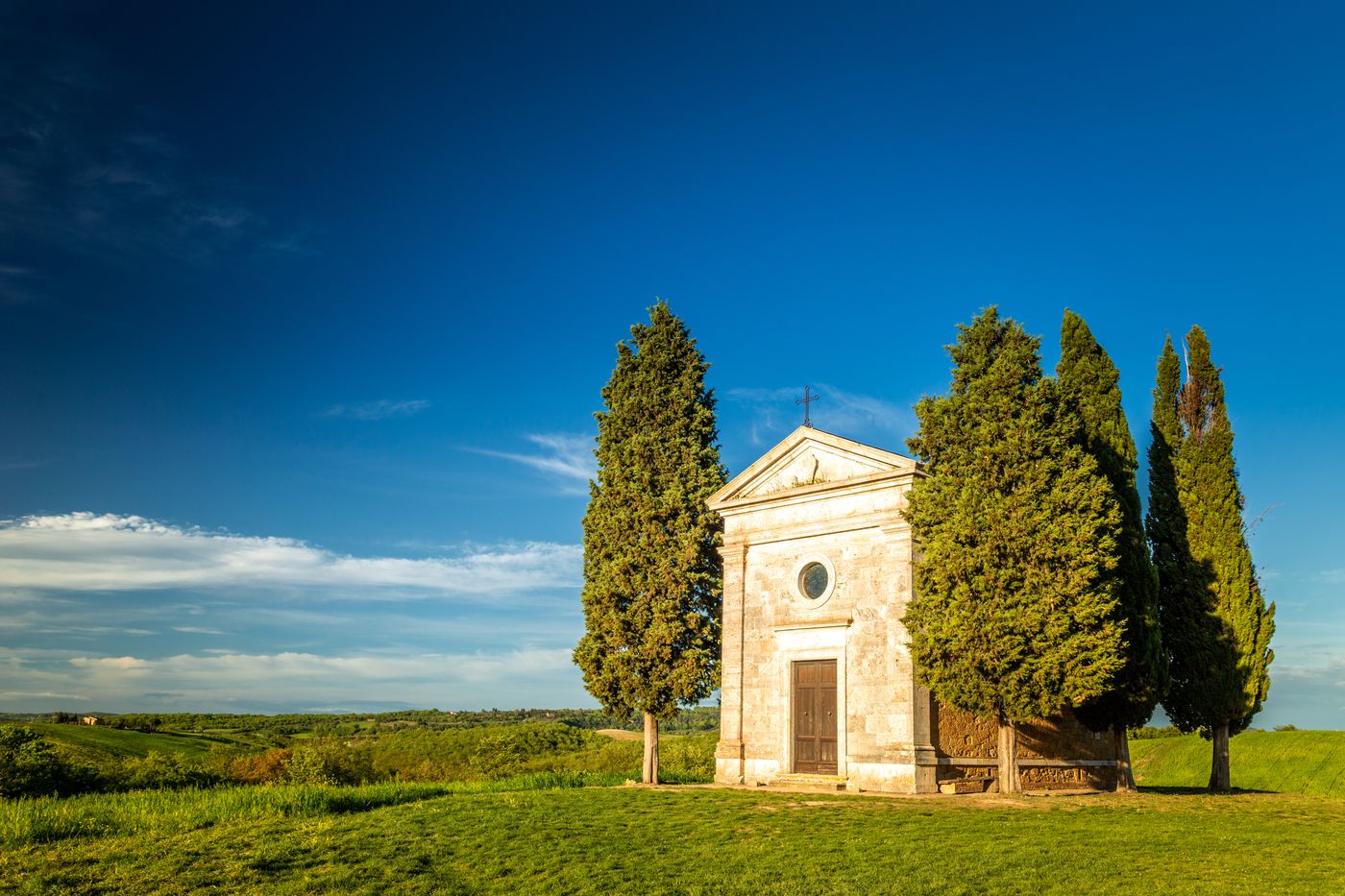
Fun fact
Pienza is also known as the Ideal City because Pope Pio II, a native of the place, commissioned Bernardo Rossellino to transform Corsignano (original name of Pienza) into a utopian city embodying all the rational principles of Renaissance urban planning.
San Quirico d’Orcia
San Quirico d’Orcia is a small hamlet that can be visited on foot in an hour but which preserves small gems dating back to the heyday of the city, the Middle Ages, even if its history is lost over the centuries up to the Etruscans.
The first thing you will notice when arriving in the city are the walls dating back to the 1400s, which still maintain a dozen towers in good condition. Of the historical original doors, however, you can only admire the Porta dei Cappuccini, with its particular polygonal structure.
In the center of the village, you will then find the beautiful Collegiata, in Romanesque style, and next to the Porta Nuova you can admire the Horti Leonini, characteristic Italian gardens of sixteenth-century origin which house a statue of Cosimo III de Medici and the remains of the Torre del Cassero, an ancient medieval tower of over 39 meters that was destroyed during the Second World War. Behind the Collegiata stands Palazzo Chigi, which houses the town council. Continuing along Via Dante Alighieri, you will arrive at Piazza della Libertà: here it is worth visiting the Church of San Francesco, an ancient Franciscan convent that since 1870 has kept the splendid Madonna Annunciata, the work of Andrea della Robbia, which you can admire on the high altar.
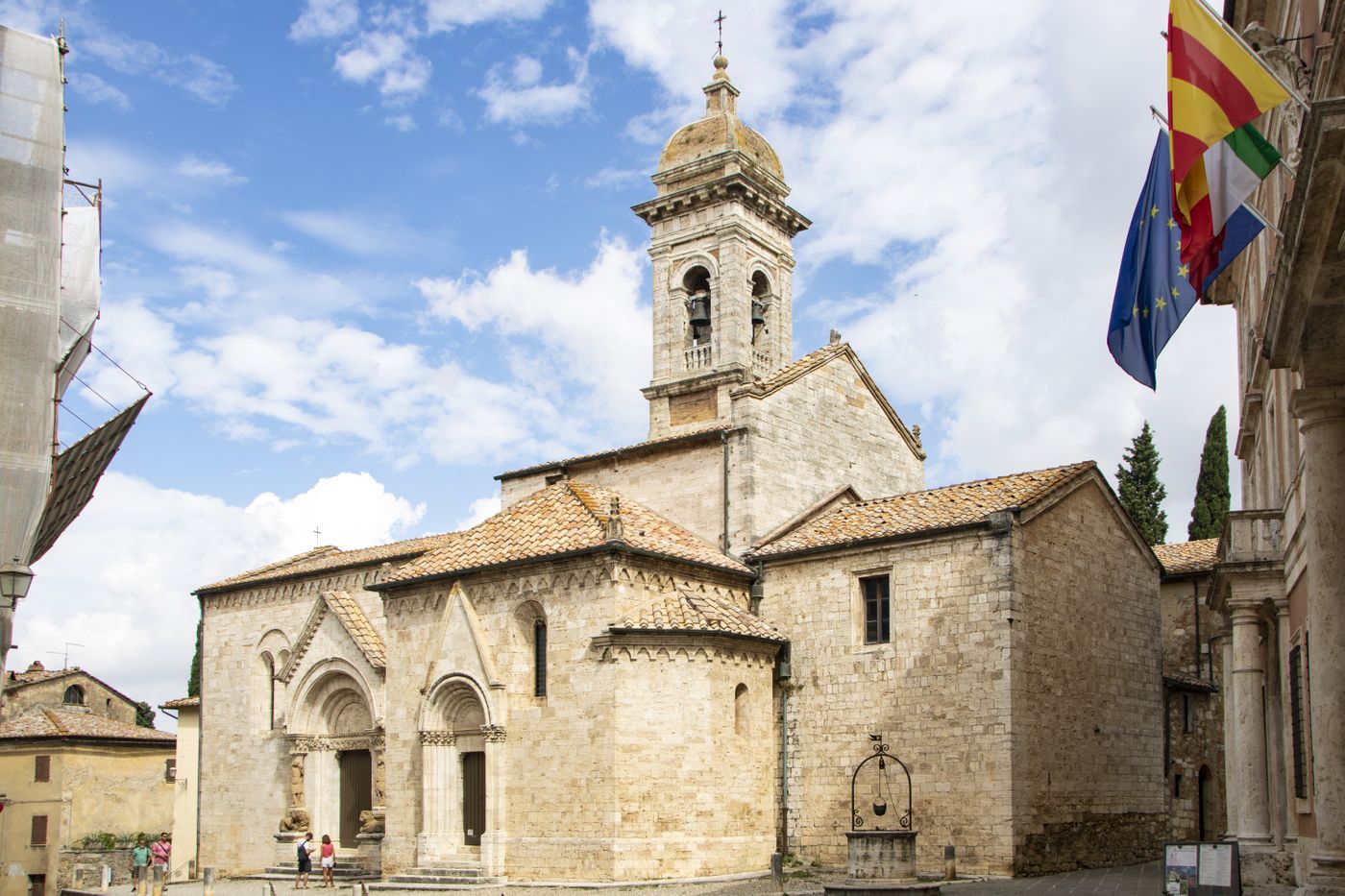
In the Middle Ages, the village was an important stop along the Via Francigena for pilgrims heading to Siena and Florence. Important traces of this role remain, such as the Ospedale della Scala, built in the thirteenth century to serve as an agricultural warehouse and as a refuge for pilgrims who walked those paths. You can find it in front of the church of Santa Maria Assunta.
In the afternoon, walk towards Montalcino passing along the Via Cassia: after just a few kilometers you will see, on your left, the iconic grove of cypresses that you have surely noticed on the web or in magazines: the cypresses of San Quirico d’Orcia are a symbol of Tuscany in the world.
At this point in your day, you may be lucky enough to admire the cypresses and all the hills around surrounded by the colors of the sunset… A breathtaking landscape that will give you the right amount of energy to visit the last stop of our itinerary: Montalcino.
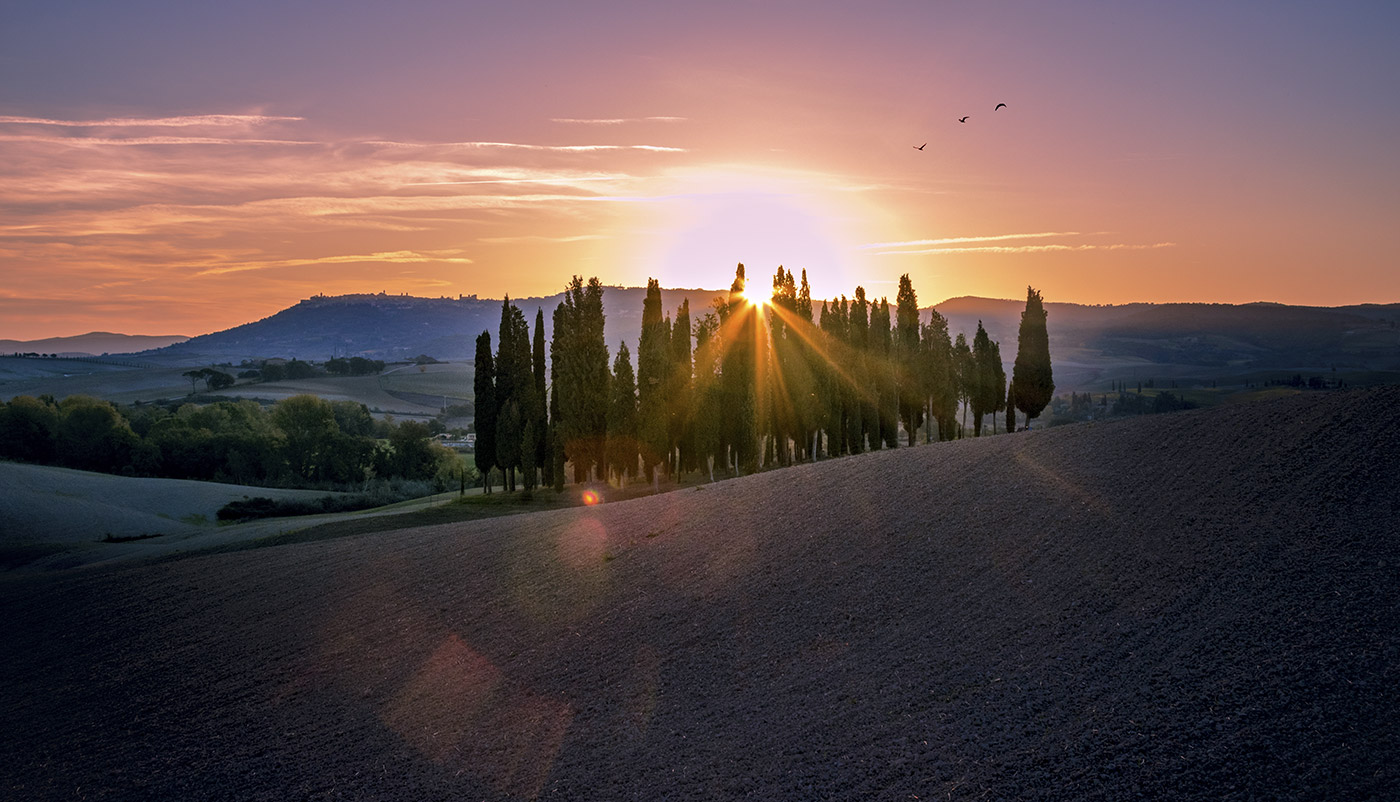
Fun fact
Via Francigena was born for strategic reasons: around the seventh century, the Lombards and the Byzantines competed for the Italian territory, but the Lombards needed to connect the Kingdom of Pavia and the duchies further south without getting too close to the Byzantines.
For this reason, they thought of a fairly safe route away from the areas under Byzantine control, passing through the Apennines, the Magra Valley, and the Elsa Valley to get to Siena and then continue along the Aria and d’Orcia valleys, until reaching the Lazio borders and entering the ancient Via Cassia that led to Rome.
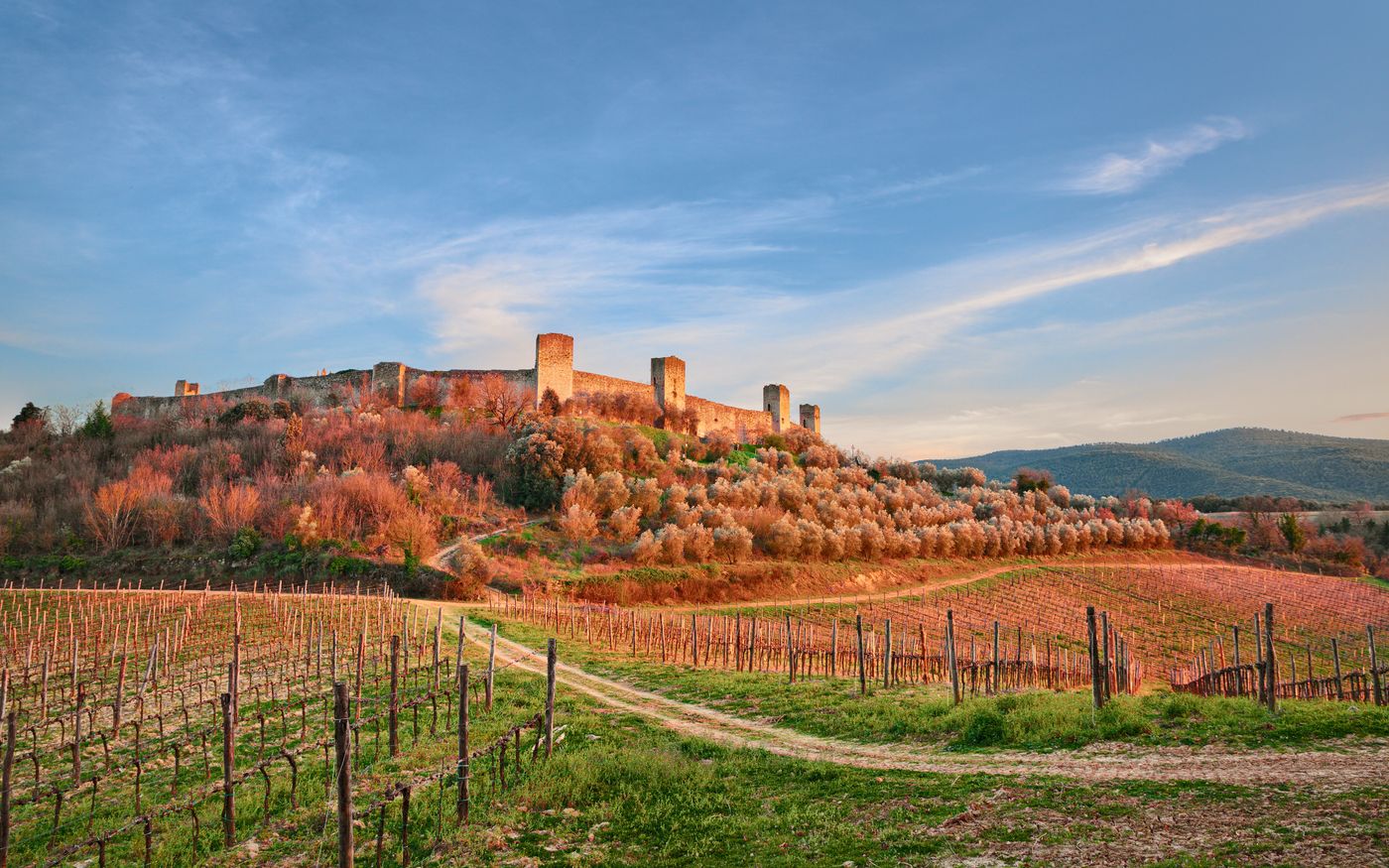
Montalcino
You will arrive in Montalcino in the late afternoon, but this medieval hamlet that seems straight out of a fairy tale will make all your tiredness go away.
Once you reach the highest point of the city, you will have in front of your eyes an unparalleled sight: the Sienese hills dotted here and there with olive trees, oaks, cypresses, and small country paths, all illuminated by the faint lights of the sunset.
Take a few minutes to enjoy the view and then go and take a look at the Rocca, a 14th-century fortress that dominates the historic center: from there you can admire Monte Amiata and the Crete Senesi, as well as the entire Val d’Orcia up to get to the Maremma hills.
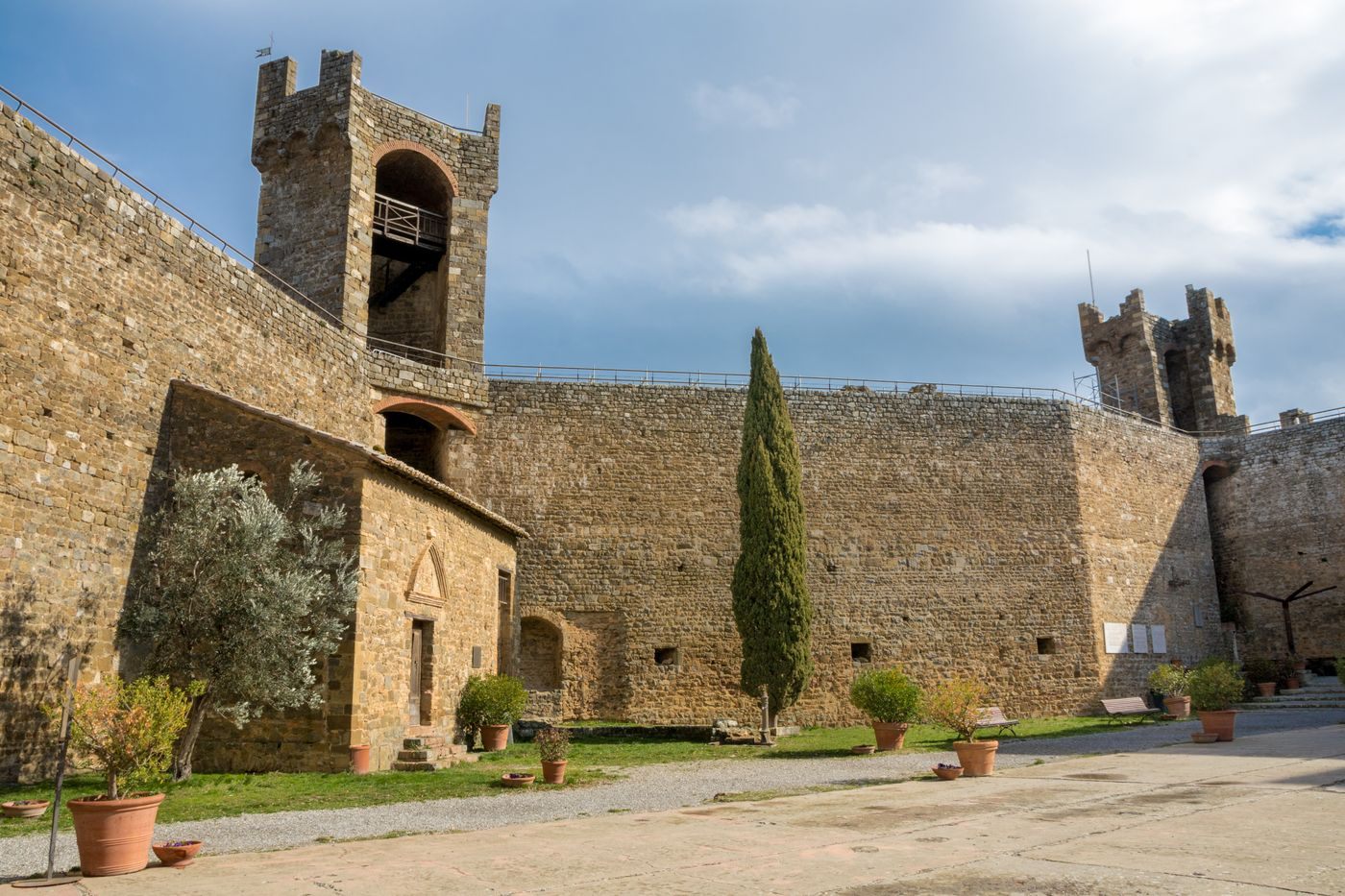
After the Rocca, head towards Piazza del Popolo, the beating heart of the city. Here you will notice on one side the Palazzo dei Priori, seat of the Municipality, characterized by the typical Sienese style, by the tall and narrow tower, and by the coats of arms of the podestà.
Also worth visiting is the Palazzo Vescovile, at the intersection of via Spagni and via Cialdini, and the Churches of Sant’Agostino, Sant’Egidio, and San Francesco.
Immerse yourself in the medieval atmosphere of this wonderful Tuscan village by slowly walking through its enchanting alleys, and when hunger strikes, we recommend that you go and eat at Locanda Demetra & Montalcino, where you can let yourself be pampered by the friendliness of the owners, savoring excellent food accompanied by nothing less than the renowned Brunello di Montalcino, famous all over the world.
Visualizza questo post su Instagram
Our journey to discover the Val d’Orcia, through unforgettable history, art, and food ends here. However, if you are too tired to go home, stop by the area to rest for the night: we recommend Borgo Tre Rose, Relais San Bruno, and Hotelito Lupaia, 3 wonderful locations where you will feel at home.
